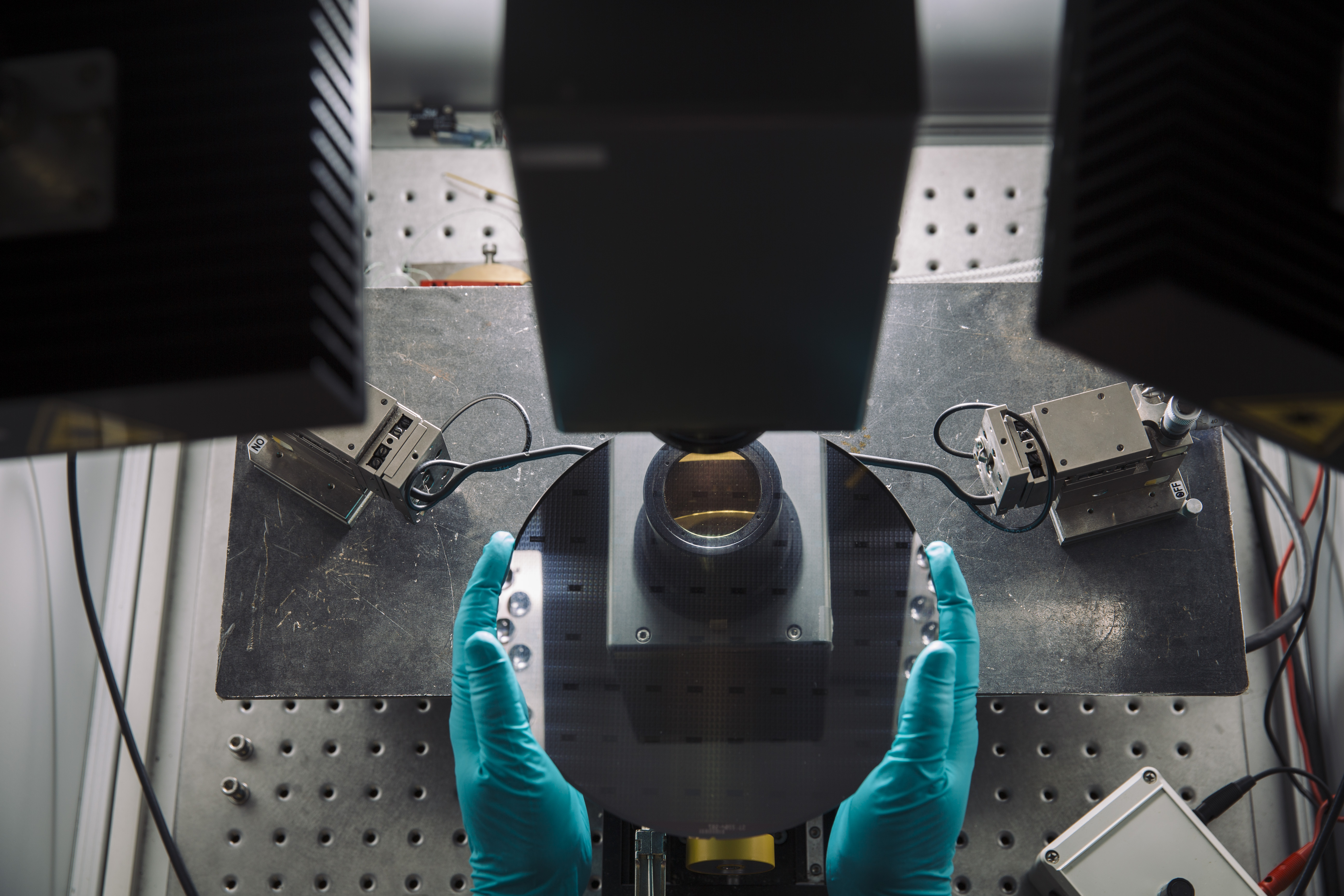
Sebastian Brand and Michael Kögel honored with Outstanding Researcher Award from Intel

For their work on increasing the sensitivity and 3D resolution of microscopic lock-in thermography analysis, the two scientists Dr. Sebastian Brand and Michael Kögel from the Fraunhofer Institute for Microstructure of Materials and Systems IMWS in Halle (Saale) have received one of the "Outstanding Researchers Award 2023" from Intel Corporation. Their findings can be used to improve the identification and localization of resistive electrical defects in microelectronic components. The semiconductor manufacturer presents the award annually to recognize outstanding contributions to innovations related to developments in nanoelectronics and associated manufacturing technologies.

In their study entitled "Enhancement of the Lock-In Thermography Analysis for the Improvement of the Resistive Defect Isolation in All Three Spatial Dimensions", Brand, Kögel and their team from the "Electronic Materials and Components " business unit at the Fraunhofer IMWS have made great progress in detecting defects in semiconductor components, significantly improving the detection and resolution capability of the lock-in thermography (LIT) method. In this special infrared thermography technique, the sample is periodically electrically stimulated, whereby resistive defect structures emit tiny amounts of thermal energy in the form of heat, resulting in microscopic temperature gradients in the micro-Kelvin (µK) range. This thermal reaction of the object is then recorded and analyzed using the methods developed at the Fraunhofer IMWS. The results can be used to localize and characterize weak points and defects.
The subject of the cooperation project with Intel was the application and extension of LIT in order to localize microscopic electrical faults in complex heterogeneous electronic architectures in a non-destructive manner. Here, the team at the Fraunhofer IMWS developed a completely new approach which, on the one hand, artificially extends the aperture and, on the other, integrates methods of artificial intelligence in order to significantly improve the ability to non-destructively localize microscopic electrical faults in depth.
"I am delighted to receive this award! It shows how relevant our research work is for industrial applications in high technology and at the same time underlines the application potential of lock-in thermography. The non-destructive method in combination with extreme sensitivity allows the detection of the smallest electrical defects such as leakage currents, partial short circuits, hot spots or cracks even in their formation phase. These properties make the method extremely valuable for future microelectronics technologies," says Dr. Sebastian Brand, team leader in the "Diagnostic Semiconductor Technologies" group at the Fraunhofer IMWS.
A total of 15 scientists whose projects were funded by Intel's Corporate Research Council were honored. With this program, Intel supports promising initiatives with high application relevance at leading universities and research institutions. When selecting the award winners, fundamental findings, industrial relevance and the degree of technical difficulty are taken into account. The Fraunhofer IMWS was the only European research institution to receive an award; the other prize-winning projects were developed at Stanford University, the Massachusetts Institute of Technology MIT and the National University of Singapore, among others.